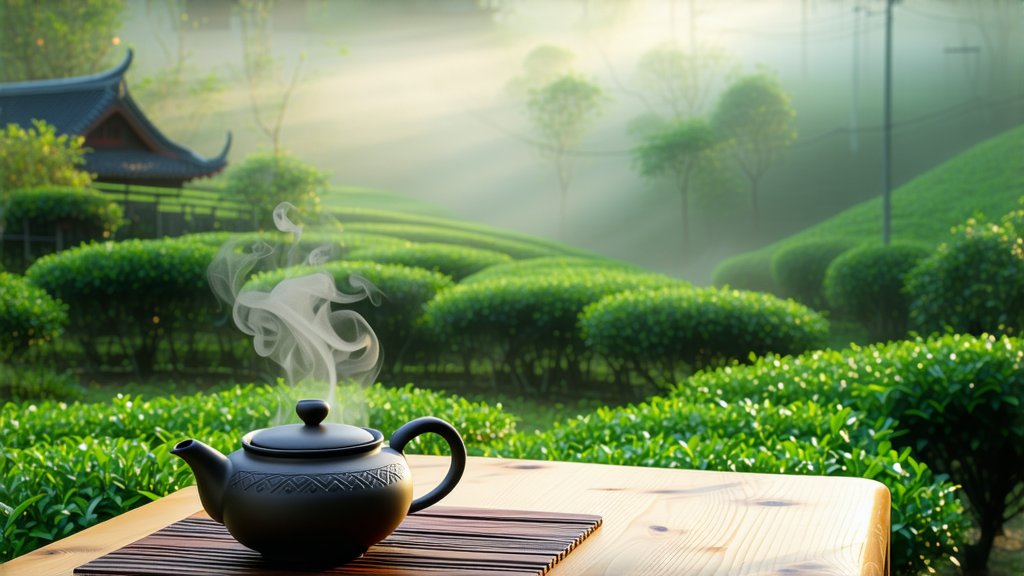
Keemun Black Tea, often referred to as Qimen Black Tea, is a variety that hails from the picturesque Qimen County located in Anhui Province, China. Renowned for its distinctive tangerine and woody notes, Keemun has carved out a special place for itself in the world of tea. This article delves into its rich history, explores its varieties, details its intricate production process, and guides you through the art of appreciating this exquisite tea.
Historical Background
The origins of Keemun Black Tea can be traced back to the Tang Dynasty (618-907 AD), making it one of the oldest tea varieties still produced today. However, it was during the Qing Dynasty (1644-1912) that Keemun began to gain international recognition. The tea's name is derived from the Qimen region, which translates to "Exquisite Gate" in English, a fitting moniker given the tea's exceptional quality. By the mid-19th century, Keemun had become one of the most sought-after teas in Europe, earning the nickname "Prince of Teas."
Varieties of Keemun Black Tea
Keemun Black Tea comes in several distinct varieties, each offering unique characteristics:
-
Hao Ya A: Often considered the finest grade, Hao Ya A consists of young leaves and buds that are handpicked. It features a bright liquor color, floral aroma, and smooth taste.
-
Hao Ya B: This variety uses slightly more mature leaves but retains a high level of quality. It offers a full-bodied flavor with hints of fruitiness.
-
Hao Ya C: Made from even older leaves, Hao Ya C provides a robust and hearty flavor profile, ideal for those who prefer a stronger brew.
Each variety is carefully processed to maintain the integrity and unique qualities of the tea.
Production Process
The production of Keemun Black Tea is an art form that involves multiple meticulous steps:
-
Withering: Freshly picked leaves are spread out to wilt under natural sunlight or in controlled environments. This step reduces the moisture content and prepares the leaves for rolling.
-
Rolling: The leaves are then rolled to break down cell walls, allowing enzymes to interact with oxygen and begin the oxidation process.
-
Oxidation: The rolled leaves are spread out again to undergo oxidation, where they turn dark brown and develop their characteristic flavors. This step is crucial for developing the tea's complex aroma and taste.
-
Drying: Finally, the leaves are dried to halt the oxidation process and reduce moisture content to about 3-5%. This step ensures the tea's longevity and stability.
Appreciating Keemun Black Tea
To truly appreciate Keemun Black Tea, one must engage in the traditional Chinese tea ceremony known as Gongfu Cha. Here’s a step-by-step guide to enhance your tea-drinking experience:
-
Warm the Teapot and Cups: Begin by rinsing your teapot and cups with hot water to warm them up. This also helps to remove any residual flavors.
-
Measure the Tea: Use about one teaspoon of tea leaves per cup of hot water. For a typical teapot, around 3-5 grams of tea leaves should suffice.
-
Steeping: Pour hot water (around 90-95°C or 194-203°F) over the tea leaves. The first infusion should be quick, around 10-20 seconds, to "wash" the leaves and awaken their flavors. Discard this initial steep.
-
Subsequent Infusions: For subsequent infusions, gradually increase the steeping time by about 5-10 seconds each time. Keemun Black Tea can typically endure 4-5 infusions, each revealing different layers of flavor.
-
Observe and Savor: Pay attention to the tea's aroma, color, and taste. Keemun Black Tea is known for its deep amber color, complex aroma, and smooth, well-balanced taste.
Conclusion
Keemun Black Tea is not just a beverage; it is a journey through history, craftsmanship, and flavor. From its ancient roots in Qimen County to its modern-day acclaim, it continues to captivate tea enthusiasts around the globe. Whether you are a seasoned connoisseur or a curious newcomer, savoring a cup of Keemun allows you to partake in a tradition that spans centuries. So, sit back, relax, and let the tangerine and woody notes of this exquisite tea transport you to the tranquil tea gardens of Anhui Province.